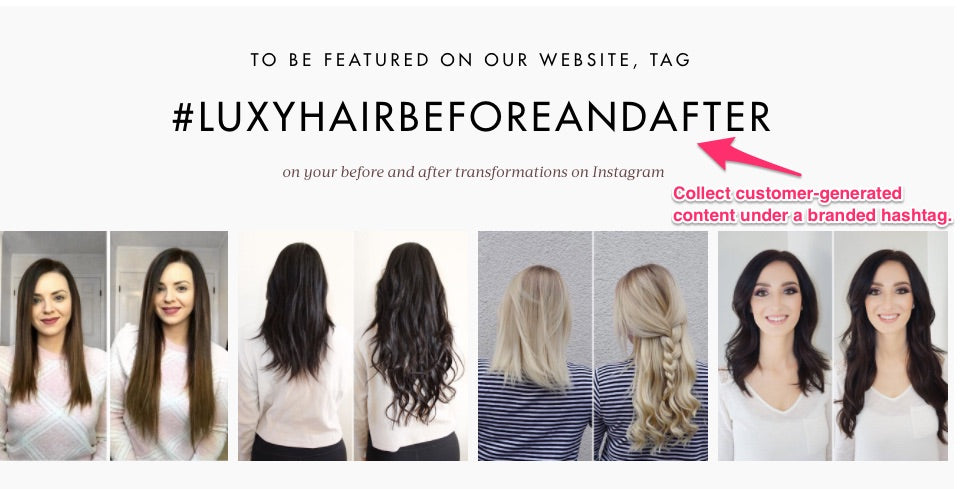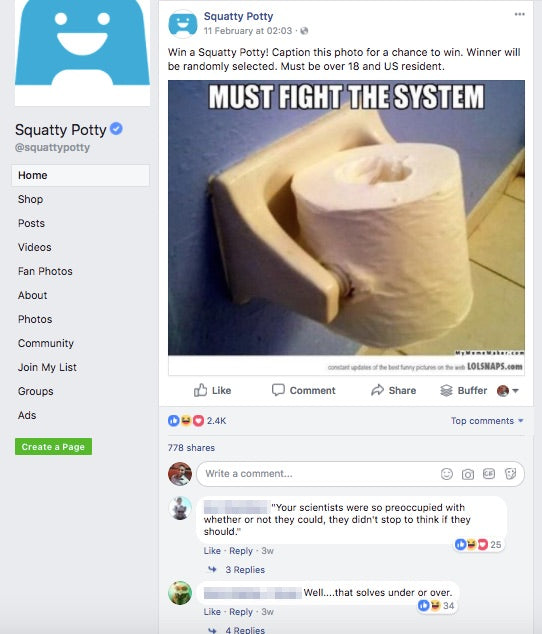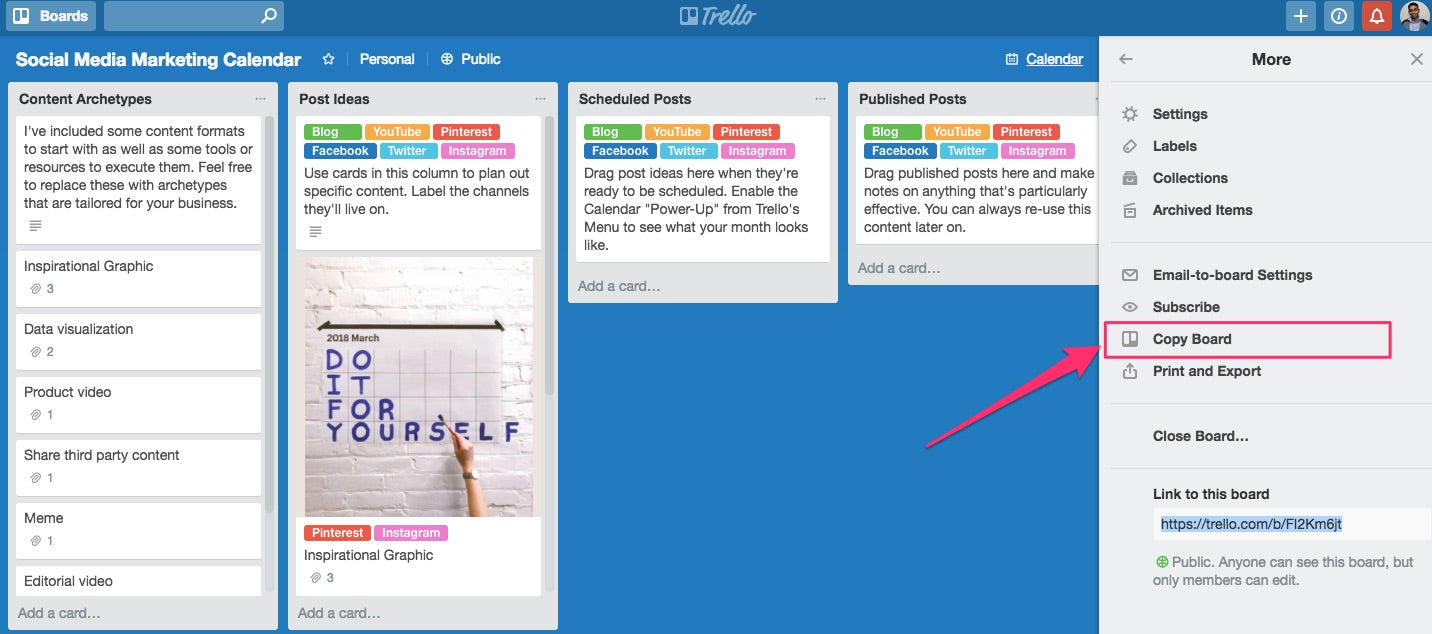Social media marketing can help youbuild engaged audienceswhere they already spend their time, create multiple sources of traffic that continually bring in customers, andgrow your business through the power of online networks.
Or, it can be a time-consuming obligation that spreads you thin, resulting in a presence your target customers don’t know or care about—a drain on resources rather than the asset you’ve seen it become for many established brands.
The difference is creating a social media marketingstrategythat keeps your actions focused, along with a process that enables you to execute without taking too much attention away from running your business.
But starting from scratch can be a daunting task, especially with so many different channels to build a presence on and the commitment that comes attached.
That’s why we’ve put together this guide to walk you through how to approach your own social media strategy, along with tools and tips to help you pull it off.

Social media strategy and planning templates
Ready to get started with your social media strategy? These free, customizable templates give you tools to plan and execute a strategy that connects you with your target audience while keeping your content calendar organized.
Get your social media strategy and planning templates delivered right to your inbox.
Almost there: please enter your email below to gain instant access.
We'll also send you updates on new educational guides and success stories from the Shopify newsletter. We hate SPAM and promise to keep your email address safe.
How to create a social media strategy

Before you post anything, it helps to have a big picture view of what you want to get out of your social media efforts and how you can best achieve those outcomes.
Your business (i.e. your website) is the center of your social media strategy. And your strategy is how you tie all of your social media efforts back to its various goals.
Social media marketing can serve all kinds of functions for your business, fromdriving trafficand sales, building brand awareness, amassing an engaged audience, connecting with customers and prospects, providing support, and so much more.
This is because you have a wide range of channels to incorporate, each with its own strengths, weaknesses, and opportunities to consider.
Social media can either be a swiss army knife or a rusty spoon in your marketing mix. A strategy makes all the difference.
What is a social media marketing strategy?
For the sake of making it easy to get started, there are five essential pillars to consider when creating your social media strategy:
- Goals: Define the outcomes of your efforts and how you’ll measure them.
- Target Audiences: Research and profile your ideal customer.
- Content Mix: Create social media programming based on recurring content archetypes.
- Channels: Choose the best of the available social networks you want to dedicate your time to and what you’ll use them for.
- Process: Set up the infrastructure andtools to execute your strategyefficiently.
This isn’t a prescription for social media success, only a framework to lay the foundation. By the end of this guide, you’ll hopefully be better equipped to understand how all of these considerations are connected and inform each other to make smarter decisions and revise your social media strategy over time.
Setting goals for your social media marketing plan

你文章或做的每件事都应该绑回啊ne of your goals as a business owner. To start, define what these goals are and think about how you’ll measure the success of your efforts.
Social media marketing requires a lot of testing and trying things out; you can’t improve any particular aspect of it without knowing what signals to pay attention to. You can even use these signals (which will vary from channel to channel) to define targets for your social media efforts to help you stay motivated and on track.
Here are just some of the goals you should consider for your social media marketing, which you can add to your strategy over time:
- Drive brand awareness: Reach more people to increase the likelihood of your brand getting seen by the right people. You can measure this using impressions/reach, likes, shares, mentions, or any other signal that shows a real person has seen your post(s).
- Create demand for your products: Get people interested in your products with relevant inspiration or education, which you can gauge by clicks to your site, products added to a shopping cart, or comments/messages from interested customers.
- Acquire leads: Get your audience to convert into email subscribers, which you can then nurture into sales off of social media for free. This can also mean building an audience of interested shoppers you can retarget with ads.
- Get sales: These are paying customers that come from your social media efforts and can be measured by number of orders or revenue.
- Drive offline traffic: If you’re a retail business or are hosting events, one of your goals might be drive people to a specific location in real life.
- Network to form partnerships: Engage with influencers or like-minded brands for influencer marketing orco-marketingcampaigns.
- Build a loyal following: Grow an engaged audience that wants to hear from you; don’t inflate your follower count with fake or bought followers. You want to build an authentic community of people who are interested in your products, and who will promote your content or products to others. You can measure this by followers you’ve added or lost in a certain time frame, or your engagement rate (total engagement divided by number of followers).
- Establishsocial proof: Source positive testimonials or content generated by customers/influencers that casts your brand in a positive light and can potentially be used in othermarketing strategies.
- Provide customer service: A social media presence opens you up to customer questions, complaints, and inquiries. So one of your goals will be to provide this support to customers or direct it to another preferred, private channel. One way to measure this is through your response time for direct messages (This is displayed as a badge on your Facebook page, for example).
- Become a thought leader in your target market: Social media gives you a voice that you can use to not only participate in conversations, but shift them in the direction you think they should go in and build credibility around your products or services.
All of your choices should aim to tick one or more of these boxes, and any ideas and new tactics you plan to test out should be evaluated on their potential to achieve these goals. Some of them may be long-term investments while others are more immediate.
牢记这些目标,我们得到的next step: figuring out who you’ll be trying to reach.
Identifying your target audiences

Marketing, on and off social media, starts with understanding your ideal customer. Building a rich context about your target audience takes time, but there are steps you can take immediately that will put you in a better position at the start.
Spend some time researching your target audience, looking for demographic and psychographic data or observable patterns that help you form a mental image of who is likely to buy from you. This exercise won’t just inform your initial strategy but also help you develop a voice and tone for your brand that resonates with them.
If your business naturally focuses on a specific niche (like cat owners, for example), your job will be easier than if you’re trying to appeal to a more general audience (like a telecommunications or airline brands). I recommend lurking in the places your intended customers often hang out, onReddit或博客评论为例,看看他们是什么interested in.
Facebook, being one of the largest social networks and thus a database of2.3 billion monthly active users, is also a great place to do some audience research. Check out your competitors’ pages, clicking through on the profiles of some of their engaged followers to get a better sense of who they are and what they like.
Once you’ve done some digging, you can put it all together to create an ideal customer, or "buyer persona", who is likely to buy from you.
You don’t have to fill out every trait, but describe what you can to paint an image of this person as it is relevant to your business.
Location: Where do your ideal customers physically live? Even knowing just the country can help, but if you’re a local business or only want to serve a specific area then you should isolate those places.
Age: What is the age range of your customer? Keep this as broad as possible, unless you know for sure your target customer is at a certain point in their life.
Gender: What gender do they identify as? This might unimportant or essential, depending on your brand.
Interests: What are their interests/hobbies/passions? These help with potential content ideas and audience targeting. (e.g. cooking, hip hop dance, yoga).
Career/Industry: What industry do they work in and what job titles have they held? Again, this might not be as relevant, depending on your brand.
Income Level: What is the income range of this buyer persona? Are they price-sensitive or are they willing to spend more money for premium products?
Relationship Status: Are they single, actively dating, or already married? This may be relevant if you’re in the wedding industry, for example.
Favorite sites/apps: What type of websites do they keep bookmarked? Do they browse Instagram or Pinterest daily? Are there specific apps they couldn't live without?
Motivation to Buy: What reasons would this person have for buying your product? Do they want to sport a status symbol or make time to work out despite a busy schedule?
Buying Concerns: Why might they choose not to buy your product? Are they worried about the quality?
Other info: Anything else that isn’t covered but would be worth mentioning, such as education, stage in life (parents with newborn kids), events they attend, etc.
The point of these personas isn’t to be 100% accurate, but to outline your best guess at the kind of person who would be the easiest to convert into a customer.
For example, here's a profile I made for an online store I started that sells LED shoes. After doing some research, I ended up with a description that looks something like this:
- Location: Canada/United States
- Age: 18 to 34 years old
- Gender: Male and female (mostly female).
- Interests: EDM music, music festivals, dancing.
- Career/Industry: N/A
- Income Level: $30 to $70K salary
- Relationship Status: N/A
- Favorite sites/apps: EDMLife.com, Instagram, Facebook, Snapchat.
- What they consume:EDM music, memes, dance videos.
- Motivation to Buy: They want to stand out when they dance and go to music festivals. Shooting and editing videos for YouTube and Instagram.
- Buying Concerns: Quality of the product, short battery life, getting the wrong size, not confident enough as a dancer, getting it in time for an event.
- Other info: Events they attend include music festivals like Shambala, VELD.
Most of these traits can be targeted directly or indirectly through social media ads, but having it written down also helps inform the kind of content I can share and the voice I should use.
Keep these personas broad. This is all subject to change, evolve, and become more accurate as you execute your strategy and get real feedback.
Maybe one of your assumptions was wrong or your customers share another trait you didn’t expect at all.
Either way, social media marketing is one of the best ways to find out who your customers really are, and what you learn can even be incorporated into your larger business roadmap, such as what products you’ll come out with next.
You can go further and develop several audiences or “target segments” to speak to, such as gift-givers, shoppers who already buy from one of your competitors, and influencers or companies you want to build connections with.
But with at least one major target audience, you'll be in a better position to consider the next part of your social media strategy: what you’re going to post.
Coming up with content for social media

Managing a social media channel is a bit like running your own TV network.
On each channel, you can produce a content series with new “weekly episodes” (just like our series,Ask Shopify).你可以你的内容整合到其它通道s (e.g. cross-posting from Snapchat to Instagram). You can have reruns of fan favorites to fill in for empty time-slots (#ThrowBackThursday), and commercial breaks to sell your products.
Defining your content mix—the recurring formats and post types you'll rely on—makes it easier to think up and produce social content while adding a rhythm to your posting schedule to offer your audience both variety and consistency at the same time. Otherwise, you’ll wind up scrambling for something to publish every day.
Most social media accounts worth following make an implied promise to their audience that they consistently fulfill. For business owners, it often starts with a question:
Beyond your products, how can you consistently provide value to your target audience?
It’s not only about what you post, but how you allocate your resources (time, money, creativity) to maintain your social media presence on a specific channel. Some ideas will warrant a greater investment because they help achieve a number of your goals at once.
But within your content mix, you want to also have ideas you can plan for in advance, reproduce, and schedule to go out on a regular basis.
For example, you might feature a customer testimonial every Tuesday and share a quote graphic every Wednesday and Friday. These pieces that are relatively easy to turn around can keep yoursocial media calendarfull while you build out more elaborate assets, such as apromotional videoor a blog post.
The content mix you develop can incorporate:
- News: Information about what’s happening in your industry or posts that are based on what’s trending at the moment.
- Inspiration: Motivation to use your products or pursue a certain lifestyle, such as quote graphics or photos from around the world.
- Education: Share fun stats, tutorials, and facts or how-to posts from your blog or YouTube channel.
- Product/promotional posts: High quality product shots of your products being used, demo videos, testimonials, or feature explanations can help you achieve your ultimate goal of getting sales. You can often run these as ads after you create them.
- Contests and giveaways: A contest or free download in exchange for an email is a great way to promote something of value to both you and your audience other than your products.
- Customer/influencer features: Shots or videos featuring your customers or the people they follow.
- Community events: Share meetups, fundraisers, or learning opportunities, especially if you’re a local business.
- Q&A: Ask your audience a question or make a request to elicit responses, such as ‘Tag a friend who’s always late”, or answer a common question that you get from customers.
- Behind-the-scenes: Share how your product is made or what you’re doing to grow your business to offer some transparency that your audience can relate to. Giving your audience a look into the humans behind your business can go a long a way to create trust or build your personal brand as a founder.
- And more:Get creativeand try to come up with a content mix that differentiates you from your competitors.
Aim for about 5-7 content archetypes to start off with, balancing your content mix with post formats that you can quickly create with a couple that might take some time to produce, like a product demonstration video, as well as posts that aim for sales and posts that just seek to delight and grow your audience.
Based on my example of selling LED shoes to an audience of dancers and music festival goers, I might start with the following content archetypes, tying each one to different goals until I have a healthy mix:
- Promote a post to a popular product in my store. (Sales)
- A relatable meme about EDM culture. (Awareness and engagement)
- Share a roundup blog post of top 10 music festivals/songs/etc. this summer and ask for audience opinions. (Engagement and creating demand)
- Share a cool dance video from YouTube. (Audience building and engagement).
- Share a popular song from Spotify. (Engagement)
- Highlight a specific product feature (Sales)
- Share a dance video or picture submitted by a customer and tag them (Engagement, sales, create demand).
Some of these ideas might be flops. Some might be hits. The point is to come up with goal-oriented concepts to test out.
Vary your programming so it doesn't lean too heavily on sales posts.When new followers land on your account, their perception of your brand will likely be your last 3-6 posts (depending on the platform). If they’re all explicitly selling your products or services, it will turn them off.
Note: Keep in mind that anything you create can potentially be promoted again and again to your audience over time, or on other channels. Don’t shy away from eventual “re-runs”, especially if a certain post has proven to give your traffic, engagement, or sales a bump.
To get you inspired to come up with your own content mix, here are some ideas that you can borrow from brands that are doing well on social media.
Get customers to contribute content
Luxy Hair relies on style education via their blog and YouTube channel to market their hair extensions, which no doubt takes time to produce.
But on their website and in their marketing communication, they encourage their customers to share before and after pictures on Instagram using a branded hashtag. These photos are then shared on Luxy’s own Instagram account or store using one of the availableShoppable Instagram apps.
If your products beg to be shared on social media, you can harness that to source social content that you can use for your own social media posts, tagging your customers to give them the spotlight.

Shots of your product being used
While it’s great to have several content formats to add variety to your social media marketing mix,even one proven content archetype can do wondersfor growing your audience if published consistently.
Letterfolk’s Instagramis a great example of how developing a theme through what you post can make social media publishing less work in the long-run without sacrificing engagement. Nearly all of their posts feature the same premise: an interior shot of their flagship letter boards sporting a relatable quote.
They can succeed with this strategy because each post helps them achieve several of their goals at once, namely:
- Create high-level engagement with relatable quotes.
- Grow a following through an account with a clear and consistent premise.
- Drive sales by showing off the product in action.
Think about how you can develop your own content formats to chase several of your goals with a single post.

Humor that relates to your target audience
Being funny can go long way in getting your audience to engage with what you post. If humor lends itself well to your brand, then by all means make room in your social media marketing for content that elicits a laugh.
Squatty Pottyis a great example of this. Their flagship product (a toilet stool that optimizes your posture in the bathroom) would be hard to sell seriously. So they don’t.
Instead they rely on viral content formats, such as memes and funny videos, to get engagement on Facebook and other channels.
If a joke is a hit, then you can consider paying to promote it to reach a larger audience (few things spread better on the internet than laughter).

When you’re starting out, you might not have the time or money to produce high quality content that’s customized for each social channel. Start small with a few ideas to experiment with. As long as you maintain a regular schedule and keep an eye on how your posts are performing, you can adapt your content mix over time.
Additional tips and resources
- Be visual:即使你不是一个设计师或视频编辑,you can use free tools likeCanva(social graphics),Adobe SparkorLumen5(videos),Meme Generatorand more to produce shareable content.
- Always aim: Tie each post in your content mix back to your target audience and one or more of the goals you established. Knowing what to measure will help you evaluate the success of a particular idea and inform your strategy over time.
- Curate and create:To avoid becoming overwhelmed creating original content, try to curate and remix content as well. Be sure to tag and credit your original sources and ask for permission if you're unsure.
Prioritizing channels for your social media strategy

Facebook, Instagram,Twitter, LinkedIn, Pinterest—there’s no shortage of places for you to build a presence for your brand.
But there are two mistakes that are easy to make when you’re just starting out on social media:
- Building your presence on more channels than you can maintain.
- Treating every channel the same and not playing to the strengths of each.
Each channel you choose is another you have to manage. You need to prioritize what you’ll be focusing on in the beginning based on the target audience you've identified and which channels can support your content archetypes and your goals. That starts by understanding the strengths and weaknesses of each channel.
For the sake of this post, we’ll cover some of the most popular social channels. There are dozens of social sites. This is by no means an exhaustive list.
If there's a channel you're interested in, be sure to search our blog for a case study or guide to learn more about it (we've covered quite a few).
Facebook: Pay-to-promote and your own business page
Few social channels are built for businesses quite like Facebook. On top of a Facebook Shop, the ability to add customer reviews, and a popular Messaging feature that can be used to provide customer service, Facebook is also one of mostwidely used social media appsby a broad range of consumers.
But it’s biggest downside is that unless you pay to promote your posts, you won’t be able to reach many people, even if they’ve opted in by “liking” your page.
That said, Facebook can be an incredibly powerful way to use social media for advertising. It’s a database of information that you can use to deliver targeted ads to your ideal customers. If you amplify content that’s set up to produce engagement (likes, shares, comments) such as a viral video, you can generally lower the cost of your advertising, so keep that in mind.
Instagram: Engaged followers and influencers
As a marketing channel,Instagramlets you focus on building a following through a variety of visual mediums.
Unlike Facebook, it's possible to get pretty good results without necessarily paying to promote yourself, although there's also the option of pursuing Instagram advertising and influencer marketing.
But also unlike Facebook,almost half of its users are millennialsso it might not be for you if your customers are generally older.
Instagram lets you post images and videos, which are discoverable through hashtags. But there’s also Instagram Stories and Instagram Live, which lets you put out photos and videos with a 24-hour lifespan or share moments in real-time. This gives you the unique option of keeping your Instagram feed consistent and clean, while using Stories to test out ideas and share behind-the-scenes glimpses that have a more casual and personal production quality to them.
Learn more:Find out how to use Instagram hashtags for your business by visitingshopify.com/blog/instagram-hashtags.
Twitter: Networking and news
Twitter’s greatest strength is that it lets you listen to and engage with other voices in the world. It might not be as strong as a sales channel for many brands, but can be used to showcase your brand’s personality (seeWendysorMoonpie'saccounts for examples).
What you can use Twitter for instead, if you choose to, is networking with other brands, journalists, and connecting with potential and existing customers on a smaller scale. Many Twitter users also rely on the platform for news, if that’s a part of your content mix.
Pinterest: High buying intent for certain verticals
虽然Pinterest并不完全是“社会媒体网站”, and is more comparable to a search engine, it often finds itself in a company’s social media marketing mix, especially among ecommerce brands. That’s because users actually come to Pinterest withmore intent to actually buy somethingthan any other social platform.
Unlike the channels above, Pinterest has a clearly defined user baseconsisting mostly (70%) of womenwith disposable income. It's not for every brand, but it's a product-friendly platform for those are a good fit. If you’re in the fashion, handcrafts, or home decor space, you’d be missing out an opportunity to get traffic and sales here through both organic and paid tactics.
LinkedIn: Your company profile and professional network
LinkedIn’s greatest strength is its position asthesocial network for professionals. If your target audience can be identified by a particular profession or there are companies that need your products or services, then it might be worth building your presence here.
LinkedIn is also a great platform for networking, hiring talent, building thought leadership, and pursuing business development opportunities, reaching out to brands or people of interest you would like to partner with.
At the very least, it’s worth having your own personal LinkedIn profile set up for networking and a company page so others can learn more about your business and its employees.
Additional tips and resources
- Consider content marketing channels: If you have the time and ability, you can start a blog or a YouTube channel that you can be part of your social media strategy. Content marketing can contribute to your social media programming, and social media can be used to distribute your content marketing and source ideas, photos, and more.
- Focus: Take some time to learn and test one or two platforms at a time. It's better to be excellent on one channel than mediocre on several.
- Optimize your profiles: Fill out your social profiles with all the information your customers might want and try to claim the same username on every platform, especially a unique tracking link to your website. Have a clear bio that describes what you do and what you’re about (this is essentially your digital elevator pitch). Also be sure to have an avatar and cover photo wherever applicable. You can use Canva to create these in the right dimensions for each channel you’ve chosen.
创建一个进程来执行你的社交媒体plan

With an understanding of your goals, your target audience, and how you’ll be using different channels, it’s time to create the framework you need to manage and schedule your social media calendar.
There are a wide variety of tools you can use for this purpose, but I recommend usingTrellofor planning content and Later, Hootsuite, or Buffer for scheduling because they all have fairly robust free plans to get you started.
Collecting ideas and planning content
Ideas often seem to strike at random. So you need a place to collect and develop them as inspiration comes. Trello has worked wonders for me because I can not only save ideas to a Trello board, but attach links, files, and notes to each idea as it comes to life. It gives you the flexibility to be as meticulous or as barebones as you want with your planning.
The content archetypes you developed earlier are good to fall back on as you plan out what you’ll be posting, but you can also stray from them with new ideas and opportunities. There’s always going to be aspects of your social media marketing that are reactive, organic, and experimental.
Regardless, you want to create a process that lets you keep a backlog of ideas and develop them until they’re ready to schedule.
I’ve mocked up a template in Trello that you can copy and adapt to suit your own purposes.

If you’re planning to post the same content to multiple channels, make sure the content and copy are optimized for that channel. You can attach channel-specific variations to each card for easy access when you start to schedule your posts out.
Scheduling content: when, where, and how often to post
With content in the pipeline of your social media calendar, it’s time to schedule your posts. Once you’ve prepared the copy, images, and whatever else you need for your content, you can start scheduling them using a tool like:
- Bufferfor easy, automatic scheduling.
- Hootsuiteif actively engaging with others or“social listening”is a big part of your strategy.
- Laterif you’re building a visual social media brand with Instagram as your focus.
But how often should you be posting on each of your chosen channels?
While some answers can be really prescriptive, the real answer is to start slow and then ramp up to a higher frequency as you develop your routine and figure out what works.
You don’t want to spread yourself too thin or spam your audience’s feeds. It’s fine if you only have time to post once every few days in the beginning. You can build up to one post a day and then test to see if a higher frequency actually nets you better results on specific platforms.
The “best posting times” for your particular audience is something you’ll only discover through trial and error. Popular posting times will also vary depending on seasons and other variables.
If you need a good place to start, think about when people check their feeds: in the morning, at lunch, during their commute, before bed.
What’s more important is that you schedule your posts in batches, at least a week in advance. Do it in one sitting, dedicating a few hours at a time so you can focus on other things while your social media publishing runs in the background.
Automate what you can to make time for the tasks you can’t.
The reality of social media marketing is there are activities that you won’t be able to simply schedule and forget if you want it to be effective.
There’s are other responsibilities such as replying to your audience,community management, running ads, and of coursecreating contentthat you need to make time for (although you can outsource any of these functions whenever you’re ready).
Social media marketing, especially early on, demands that you are deliberate about how you spend your time.
Always think about how you can be more effective with your time by repurposing or reusing your content, or allocating money to paid promotion to get a better return on the time you spend creating content.
Additional tips and resources
- Create templates: Wherever possible, build design and copy templates based on what works to make it easier to turn around new content on an ongoing basis, especially for a recurring content series. For example, you can save your most used Instagram hashtags so you always have them handy when you post, or apply the same filter to your photos to achieve a consistent look.
- Keep an eye on the calendar:Holidays are a great opportunity to be topical and timely with what you post. Pay special attention to what’s coming up so you can brainstorm social media marketing ideas in advance. Sprout Social hasa great calendarthat includes hashtag holidays too, if you want something handy to reference.
- Tailor your posts for each channel: You can share the same post or image to different social channels, but make sure to take the time to optimize copy, images, or videos for the channel you're posting to.
- Make time for proactive interaction: Social media is a two-way street, and you'll need to engage with others on and off of your own content in order to make it work. That means commenting on people's posts, tweeting at others in your community, and just being sociable on these social networks.

Social media strategy and planning templates
Ready to get started with your social media strategy? These free, customizable templates give you tools to plan and execute a strategy that connects you with your target audience while keeping your content calendar organized.
Get social media strategy and planning templates delivered right to your inbox.
Almost there: please enter your email below to gain instant access.
We'll also send you updates on new educational guides and success stories from the Shopify newsletter. We hate SPAM and promise to keep your email address safe.
The best laid plans are written in pencil
It sounds obvious, but it needs to be said: Social media is a lot different as a business owner or marketer than as a casual user.
Your aim now is to get a positive return on the time, money, and effort you spend on it. That requires intention behind every action.
Your social media strategy is your plan of attack. But in a space like this that literally changes by the day, with surprise newsfeed algorithm updates, new channels, and audiences always ready for something new, you need to remain flexible and keep your finger on the pulse of the internet to constantly improve without getting distracted by every new shiny object.
However much things change, though, these three best practices will never go away: Be authentic, delight your audience, and when in doubt, guess, test, measure, and learn.
Special thanks to Brent Stirling, Social Media Specialist at Shopify, for sharing his experience and insight building social media strategies for both new and established brands.


